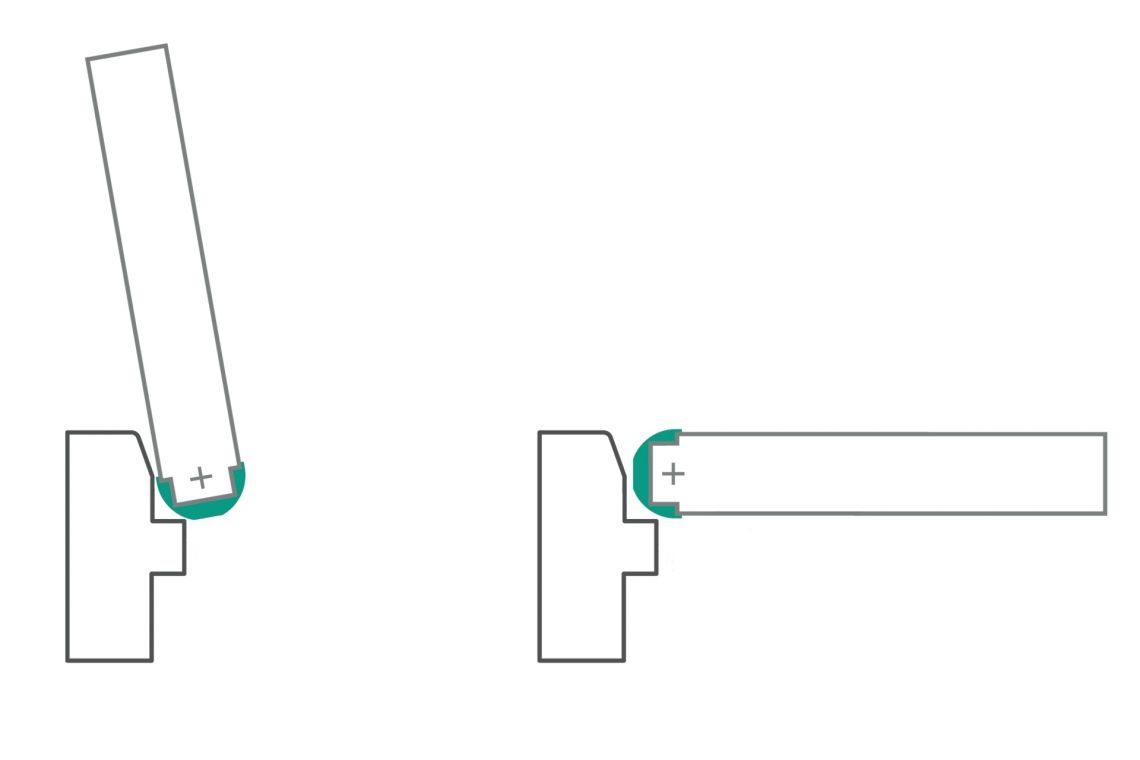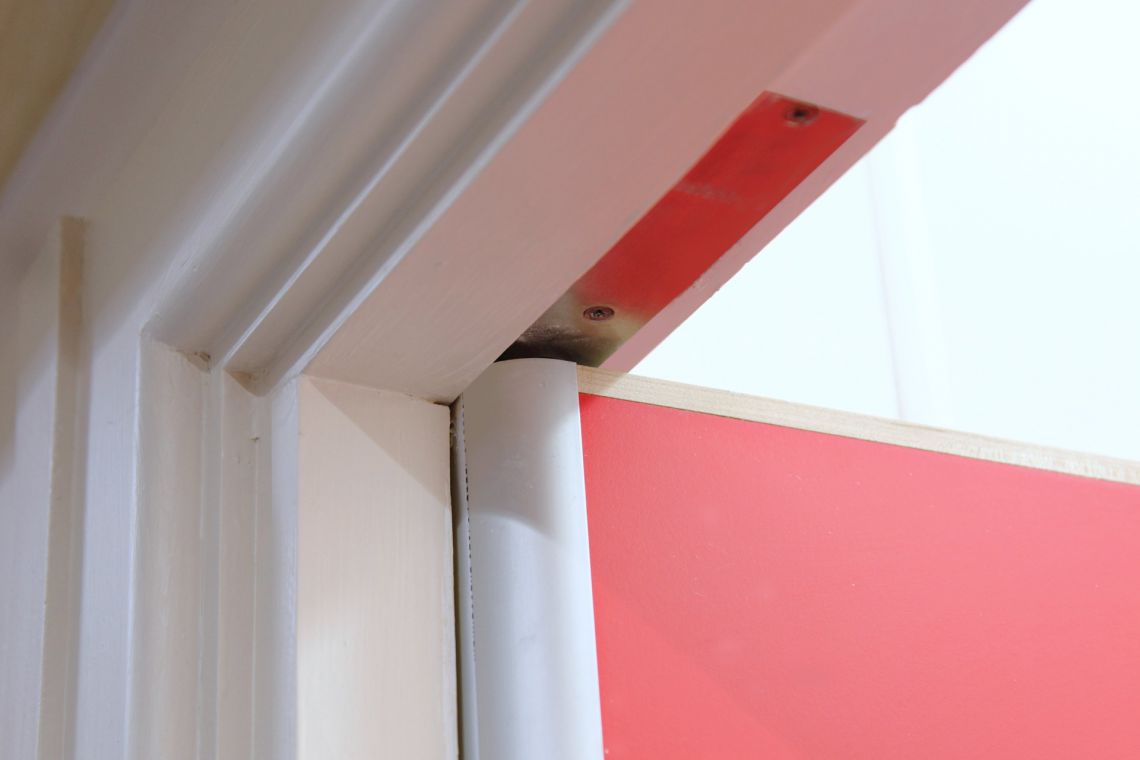
FINGER GUARDS THAT SATISFY EMPLOYER’S REQUIREMENTS
Offering superior safety, providing durability and enabling cost savings up to £1,000, our integral finger guards satisfy Employer's Requirements, unike plastic, rubber and roller blind alternatives.
Because of this, we have developed a position as market leader, providing finger guards to over 80% of Local Education Authorities (LEAs) and numerous independent schools.

Designs out the problem
Using pivots and a rounded edge to minimise the gap between door and frame, our integral finger guard improves safety through designing out the problem of trapped fingers.
As the door opens and closes, the gap remains constant at just 2mm – too small for fingers to get in harm’s way.
Similarly, our retrofit finger guards’ patented finger-ejection system makes it almost impossible to trap a finger. As the door opens, the aluminium body floats into the gap, unlike rubber guards which simply cover the gap, leaving open the possibility of fingers wandering into the trap and getting trapped.

Cost savings of up to £1,000
Because our finger guards are robust and design out the problem, they last longer than plastic guards, delivering significant cost-savings.
Once fitted, the integral finger guard will last the lifetime of the door, removing the need for regular replacements and saving between £500 and £1,000 per door over 25 years. And whilst the cost of a roller blind finger guard is similiar, our integral finger guard designs out the problem and blends in more seamlessly – making it better value for money.
The retrofit finger-ejecting guard is also hard-wearing – lasting around 15 years and, delivering cost-savings of up to £300 compared to plastic finger guards.
Satisfying Employer's Requirements
Because our finger guards offer superior safety, durability and cost-savings of up to £1,000, they satisfy Employer's Requirement's. This means you can be confident that you are specifying safe and durable finger guards, unlike plastic, rubber and fabric alternatives.
Plastic
Plastic
As the first attempt at finger safety, plastic guards covered the gap between the door and frame. In some situations, like the home, they’re safe and do the job. However, in high traffic areas, like schools, hospitals, restaurants and retail environments, they’re simply not durable enough.
They crack and split
Although cheap, plastic finger guards aren’t built to last. Typically, after between six months and two years of normal use in schools, GPs, restaurants or swimming pools, they split and need replacing. And once broken, the original danger is exposed, putting fingers at risk.
A maintenance liability
The real cost of a plastic finger guard is anything but cheap. Taken over the typical 25-year lifespan of a school, replacing them costs between £500 and £1,000 per door, making them the most expensive option.
Look cheap
Plastic guards can be unsightly and rarely blend in with the environment. If the interior finish and doors have been carefully planned – perhaps in colourful laminate or attractive veneer – the finger guard should be just as aesthetically pleasing.
Rubber
Rubber
Flexible rubber hinge covers were developed to address the durability issues of plastic finger guards. Hard wearing and tough, they cover the complete gap, however fingers can still become trapped.
Doesn’t solve the problem
Rubber guards merely cover the gap between the door and frame. The rubber cover is rarely taut enough to prevent the guard being pushed into the hinge gap. This leaves open the possibility of fingers wandering into the gap and being trapped in a closing door.
Highly visible
Concertina-like rubber hinge covers are made from a material not usually used on doors. Even in the closed position, customers comment they’re eyecatching and impact the overall aesthetic.
Gathers dust and grime
The soft rubber surface attracts dust and is hard to clean. The folds also gather grime, which can become a hiding place for bacteria.
Roller blind
Roller Blind
The single roller blind uses fabric tension to resist fingers pushing into the gap. And when you consider the cost of hinges, the roller blind finger guard, and the fitting, the cost is similar to our integral finger guard – which designs out the problem, offering superior safety and aesthetics.
Just hides gap
Unlike our clever designs, roller blind finger guards use fabric tension to create resistance and prevent trapped fingers. This is mostly effective but it’s not foolproof.
Affects opening force
The fabric tension resistance can make it challenging to comply with Approved Document M and BS 8300 (Opening Force for a Door).
A costly compromise
Roller blinds cost around the same as our Alumax integral finger guard — yet compromise on aesthetics. And if cost is an issue, our retrofit finger guard makes the perfect alternative. It’s durable and doesn’t impact the opening force.

THE MARKET LEADER FOR DURABLE FINGER GUARDS
Because we work closely with LEAs, understanding their challenges and satisfying their requirements, we have developed a position as the market leader for durable finger guards.
We now supply robust finger guards to over 80% of LEAs across the country with many customers using them on multiple projects.
Explore our finger guards for yourself
Our finger guards are best seen to be understood. And with a specification team across the UK, we're happy to deliver product samples.
You can change your preferences or unsubscribe at any time. You agree to Safehinge Primera using your personal data in accordance with our privacy policy. We use your data to personalise and improve your experience on our digital platforms, provide products and services you request from us, and carry out research. We will never sell your personal data to third parties.

CWM IFOR PRIMARY SCHOOL
Caerphilly County Borough Council/ Architype
We’ve been working with Caerphilly County Borough Council since 2010, when they asked us to fit our integral finger guard (Alumax) throughout their Green Hill School development. Like many LEAs, Caerphilly had previously used plastic finger guards, but grew frustrated with the lack of durability and need for frequent replacements.
Our robust design lasts the lifetime of the door, reducing replacement costs while designing out the problem of trapped fingers. Naturally, this was music to their ears — one simple solution to many issues.
